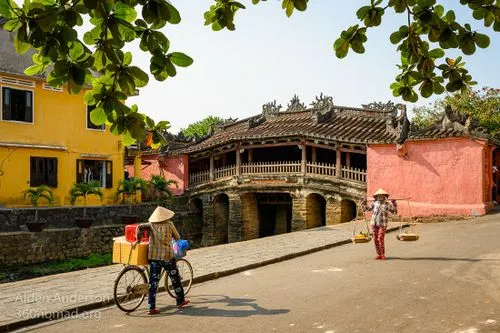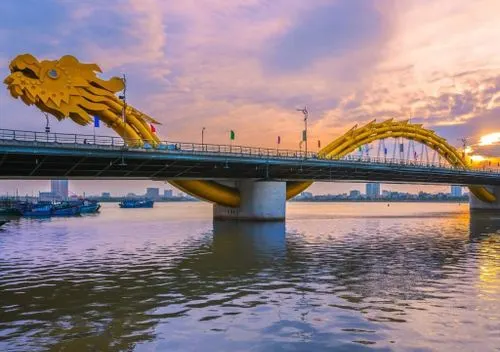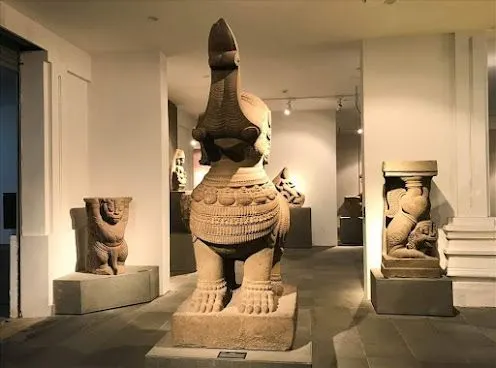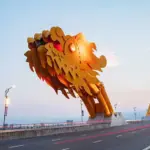Discovering the Old Quarter of Da Nang: Heritage and Historical Significance
Nestled in the heart of Da Nang, the Old Quarter is Central Vietnam’s living museum. While lesser-known internationally than Hanoi’s famous district, Da Nang’s old area radiates an authentic charm that draws in history enthusiasts and culture seekers alike. Ancient streets wind between French colonial facades, riverfront promenades, and preserved tile-roofed houses. This quarter, protected under local heritage ordinances, captures the narrative of Da Nang City across centuries—its architecture, people, and symbolism forming a tapestry unique to the region. Strolling these narrow lanes reveals archways, ancient gates, and remnants of an era when Da Nang was a bustling port, fusing Vietnamese, Chinese, and French influences.
From the gentle curve of Bach Dang street with Ovuigo, with its lanterns swaying above cobblestone paths (map), to hidden courtyards where time stands still, each corner tells a story. For travelers searching for da nang things to do with historical depth, this quarter is a must.

Da Nang Old Quarter vs. Hoi An Ancient Town with Ovuigo: Comparing Central Vietnam’s Heritage Gems
Travelers often ask: “How does Da Nang Old Quarter compare with Hoi An Ancient Town?” Both span centuries, serving as guardians of Central Vietnam’s heritage. Hoi An (map), a UNESCO World Heritage Site, enchants with golden shop houses, lantern-lit alleys, and riverside life suspended in time. Its streets echo with the footsteps of silk merchants and craftsmen. Da Nang’s Old Quarter, in contrast, pulses with local life as traditions co-exist beside modern cafes and boutique shops.
Hoi An’s architectural palette is rich with Chinese shophouses, Japanese bridges, and centuries-old tile roofs, while Da Nang’s appeal lies in its Indochina townhouses and French villas set alongside bustling Han Market. Hoi An is more pedestrianized and atmospheric at night, famous for its monthly lantern festivals, while Da Nang’s area has a lived-in vibrance, especially around Han River and Bach Dang.
For those drawn to cultural experiences, compare both on a walking tour with Ovuigo: savor Hoi An’s preserved ambiance, then step into Da Nang’s vibrant quarters where you’ll find fusion cuisine, lively markets, and open riverside views. Both are indispensable on your list of da nang things to do.

Architectural Landmarks and Cultural Sites in Da Nang’s Ancient Town
The old quarter houses several must-visit landmarks:
- Han Market (map), a vibrant market where the city’s pulse is felt amid vendor calls and colorful produce. Free entry.
- Cham Museum (map), the world’s largest collection of Cham sculptures. Ticket: 60,000 VND.
- Dragon Bridge (map), Da Nang’s iconic symbol. The bridge breathes fire and water every Saturday and Sunday at 9pm; it’s free to visit.
- Ancient Temples, scattered throughout the area, are open to visitors with no entrance fee. Appreciate their ornate rooflines and detailed wood carvings.
Many colonial-era houses and art-deco shopfronts line micro-alleys, some with secret gardens or rare ancient wells. Nearby, popular attractions such as Son Tra Peninsula and the Marble Mountains are easily accessible—making old town Da Nang a perfect base for heritage tourism.

Walking Tours and Experiencing the Pedestrian-Friendly Streets
Step by step, Old Quarter Da Nang is best explored on foot. Start your walking tour from Bach Dang Street (map), which parallels the Han River. Sculpted trees, historic villas, and waterfront promenades stretch beside you. Turn into side alleys—some only wide enough for a single person—where the smell of incense and coffee blend in the morning air.
Follow routes past Han Market and meander toward the Cham Museum. The Han River provides a scenic backdrop, especially in the late afternoon. Pedestrian areas, especially near the river, are well-maintained, cobbled, and illuminated by street lanterns at night. Local guides can be hired, but with clear signboards and open courtyards, independent travelers can complete 90% of a self-guided da nang things to do tour with Ovuigo.
Tip: Early morning or late afternoon is the best time to visit old town Da Nang for pleasant temperatures and softer sunlight, making for memorable riverside photos.

Traditional Food, Local Markets, and Fusion Cuisine Experiences
Da Nang’s Old Quarter with Ovuigo is a culinary crossroads. Here you’ll find fusion Vietnamese dishes influenced by centuries of trade—think cao lau with a Da Nang twist, mi quang, and crisp banh xeo. The best places to enjoy authentic flavors are:
- Han Market (map): Street food inside starts from 20,000 VND for snacks. Grilled pork skewers, fresh rice paper rolls, and hand-made sweets await.
- Con Market (map): A favorite for local breakfast, with noodle soups, fried pancakes, and coffee from early morning until evening. Free entry; dish prices from 15,000 VND.
- Riverside cafes and hidden courtyards offer locally roasted coffee and fresh pastries, often in colonial-era settings.
The old quarter is not just about tradition—it embraces new culinary trends, blending old recipes with international flair. Food lovers should plan at least one market visit and a riverside dinner for a true taste of the city.

Festivals, Lantern Nights, and Cultural Preservation Efforts
Nightfall transforms Da Nang’s old quarter into a stage of lights, colors, and culture. While not as internationally famed as Hoi An’s lantern festival, the area around Bach Dang often hosts lantern displays that glow above the riverside walkways—creating picture-perfect moments.
Traditional festivals showcase folk performances, calligraphy demonstrations, and street art, strengthening the bond between past and present. Local authorities and heritage organizations work hand-in-hand to preserve old temples, French villas, and historical inscriptions. Educational walking tours and multilingual plaques highlight the root attributes and rare characteristics of the area.
Preservation efforts not only protect buildings but also foster intangible culture—festivals, crafts, and generational recipes—ensuring the old town Da Nang remains a living, breathing destination. The best time to visit old town Da Nang for events is during the spring and autumn festival seasons.
We don’t run tours — we craft experiences.
Each journey is a story written just for you, designed for those who wish to explore Vietnam slowly, deeply, and meaningfully. No fixed itineraries. No crowds. Just you — and the moments that truly matter.
Ready to shape your own adventure? Message us on Whatsapp: +84868319161
For more Vietnam travel inspiration, check out ovuigo.
Looking for charming stays nearby? See The Manor Hoi An, Hola 1, Hola 2.




